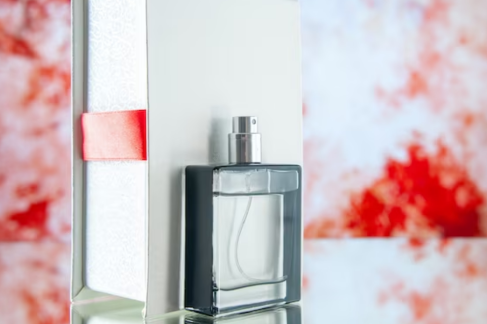Should You Polish or Not Polish Your Luxury Watch?
Like your car, you want to have your Audemars Piguet watch cleaned, oiled and synchronised back to factory condition every five years or so. Eventually, you decide to take your luxury watch for servicing to its authorised dealer. No doubt, the experts do an excellent job while servicing. However, the servicing process also includes polishing, thereby making your timepiece finally look and run like brand-new.
Now, this ultimate scenario or appearance of your watch may horrify some collectors. Polishing entirely removes the scrapes, the warm patina, faded bezel and all the signs of your watch’s well-lived life. And for several vintage luxury watches, it also reduces the considerable resale value.
Thus, you must be wondering, ‘should you polish or not polish your Audemars Piguet or Rolex watch?
READ ALSO: Some Impact Factors to Make You Beautiful in Ladies Jumpers
The Polishing Anomaly
It is indeed pretty difficult and complicated to answer the question – should you polish or not polish your watch? Car owners also have to decide whether to keep their prized car in pristine shape or not, mechanically and cosmetically. However, there is perhaps a more uniform agreement when it comes to vehicles than watches.
Your old Rolex GMT-Master or Submariner has a scratched case and a discoloured bezel insert. So the paradox is whether or not you should get the case polished while sending your Rolex watch for servicing. Most watch collectors would say you, ‘No’.
On the other hand, your heart may desire to see your favourite grandpa’s Rolex glean like brand-new. However, the fact is that polishing a Rolex timepiece involves several risks. What are those risks? Please continue reading to find them out.
Risks of Polishing your Rolex
As a Rolex owner, you know how much a Rolex watch shines due to the high polish finishes on the bracelet and case. However, the process of polishing involves the removal of a thin metal layer. Eventually, it can alter the finishing and change the actual shape of your watch and its components.
Collectors often use the term ‘crisp lugs’ while delineating Rolex watches. It refers to the slightly-polished or unpolished models that retain much of their original form. On the contrary, the lugs are usually rounder and thinner in over-polished timepieces.
Keep note that you can cover up a fallacy in a painting, but a flaw resulted for bad polishing is irreversible. Thus, a vintage Rolex watch with original components and shape is worth much more than an over-polished one. Serious watch buyers will always prefer originality over the flawless condition.
This means that a vintage Rolex Daytona that bears scratches and has never been polished will fetch you higher prices than a polished vintage Daytona. Thus, if you polish your Rolex, it will not only remove a thin metal layer but also may eliminate a few zeros from your watch’s value.
Trust Only a Professional to Polish
Well, you can indeed decide to polish your watch if you are not much concerned about its long-term value. But make sure that you are choosing only an expert for polishing. The process requires experience, excellent skill and specialised equipment.
A few seconds difference and too much pressure can have you compromise the bracelet’s shape or case and result in scratching. However, some owners of Rolex watches prefer not to take their timepieces to an authorised Rolex service centre for polishing.
The fact is that the company is likely to only focus on polishing and refinishing when servicing to make the watch look and run like new rather than bothering about the long-term value. Nonetheless, whether you take your watch to an authorised service centre or any independent outlet, it is essential to affirm your polishing preferences. You can specify the parts to be polished and the parts to be left in their original condition.
If your watch has a few scratches, it may not require a complete polishing. Like many others, you can ignore these small marks or use specialised papers or cloths to buff them off at home only. However, Rolex recommends servicing its timepieces every five to ten years and polishing is a part of the service.
Well, Rolex has upgraded its design elements over the years to minimise the effects of ageing. For instance, the brand uses Chromalight for better luminous, the 904L stainless steel instead of regular steel and Sapphire crystal in place of acrylic. Also, fade and scratch-resistant Cerachrom bezel replaced the anodised aluminium bezel inserts.
Interestingly, these upgrades signify that contemporary Rolex watches are likely to gather less patina and wear than earlier siblings produced several decades ago. However, if you are in the market to get hands-on a vintage Rolex, it is pretty rare to find one entirely in its original condition.
Responsible owners typically sent their Rolex timepieces for servicing as recommended. So it is highly like to come across vintage models that had been polished at some point during its life-long history.
When to Polish Your Rolex Watch
Whether you want to polish your Rolex watch or not, it is entirely your choice. While you may prefer to polish your modern watch to sustain its brand-new look, others may be perfectly fine with the originality of their vintage timepiece.
So if your vintage Rolex with factory-original parts has not been polished ever, it is perhaps not the right time to do it. Again keep in mind that the value of unrestored Rolex timepieces is much more among collectors than polished ones.
These watches may look worn out and not appealing to inexperienced eyes but compelling to serious vintage collectors. Some of the vintage beauties are indeed becoming tougher to find in their original condition. Many people who plan to sell their Rolex watch opt for servicing and polishing it first. They think that it will help them secure a better price for their timepiece.
Unfortunately, this thinking can bestow a negative effect on your watch’s value, besides the added cost of servicing. If you are not sure whether or not to polish your timepiece, it is better to wait until you are entirely sure that it is the best way to go.











